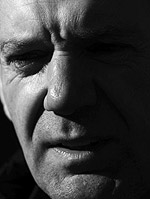- Home
-
News
-
Latest News
- Red Bull dismiss engine legality claims
- Ford v Cadillac
- Hamilton to get new race engineer
- Cadillac hits the track
- Williams announces Luke Browning as reserve driver
- "This is a new chapter for us," admits Red Bull CEO
- Racing Bulls reveal their 2026 livery
- Red Bull reveals 2026 livery
- Fornaroli and O'Ward named McLaren's reserve drivers
- More News
-
-
Drivers
-
Current Drivers
- Lando Norris
- Max Verstappen
- Gabriel Bortoleto
- Isack Hadjar
- Pierre Gasly
- Sergio Perez
- Andrea Kimi Antonelli
- Fernando Alonso
- Charles Leclerc
- Lance Stroll
- Alexander Albon
- Nico Hulkenberg
- Liam Lawson
- Esteban Ocon
- Arvid Lindblad
- Franco Colapinto
- Lewis Hamilton
- Carlos Sainz
- George Russell
- Valtteri Bottas
- Oscar Piastri
- Oliver Bearman
- Test/Reserve Drivers
-
-
Teams
-
Current Teams
- McLaren Formula 1 Team
- Mercedes-AMG Petronas Formula One Team
- Oracle Red Bull Racing
- Scuderia Ferrari HP
- Atlassian Williams F1 Team
- Visa Cash App Racing Bulls Formula One Team
- Aston Martin Aramco Formula F1 Team
- TGR Haas F1 Team
- Audi Revolut F1 Team
- BWT Alpine F1 Team
- Cadillac Formula 1 Team
-
-
Tracks
-
Current Circuits
- Melbourne (Australia)
- Shanghai (China)
- Suzuka (Japan)
- Sakhir (Bahrain)
- Jeddah (Saudi Arabia)
- Miami (USA)
- Montreal (Canada)
- Monaco (Monaco)
- Barcelona (Spain)
- Red Bull Ring (Austria)
- Silverstone (UK)
- Spa-Francorchamps (Belgium)
- Budapest (Hungary)
- Zandvoort (Netherlands)
- Monza (Italy)
- Madring (Spain)
- Baku (Azerbaijan)
- Singapore (Singapore)
- Austin (USA)
- Mexico City (Mexico)
- Interlagos (Brazil)
- Las Vegas (USA)
- Losail (Qatar)
- Abu Dhabi (UAE)
-
- Seasons
-
Pictures
-
Latest Galleries
- 2026 Livery Reveal - Racing Bulls
- 2026 Livery Reveal - Red Bull
- 2025 Abu Dhabi Post-Season Test 9 Dec
- 2025 Abu Dhabi GP
- 2025 Abu Dhabi Saturday
- 2025 Abu Dhabi Practice
- 2025 Qatar GP
- 2025 Qatar Saturday
- 2025 Qatar Practice
- 2025 Las Vegas GP
-
Gallery Categories
- 2026 Season
- F1 Testing
- 2025 Season
- All galleries
-
- Stats
- JOHNNYBET

 Red Bull Racing's new car, the RB5 represents a huge amount of work from an entire workforce, but inevitably, in media shorthand it is very much seen as Adrian Newey's baby. The Austrian outfit's Chief Technical Officer faced media interrogation this morning in Jerez when he revealed some interesting details about the new car and how it came to life.
Red Bull Racing's new car, the RB5 represents a huge amount of work from an entire workforce, but inevitably, in media shorthand it is very much seen as Adrian Newey's baby. The Austrian outfit's Chief Technical Officer faced media interrogation this morning in Jerez when he revealed some interesting details about the new car and how it came to life.



















sign in